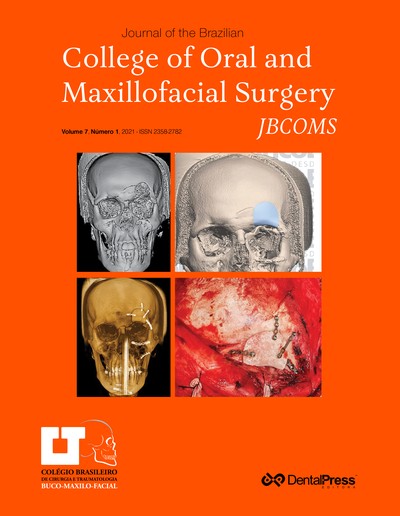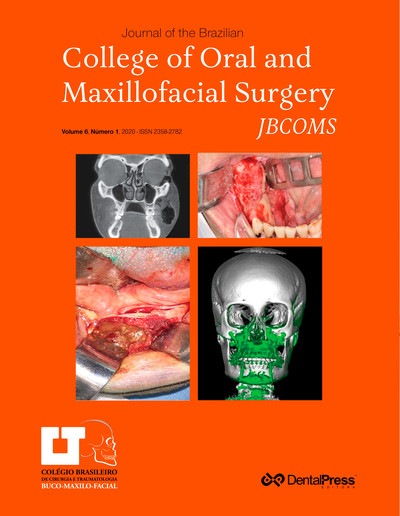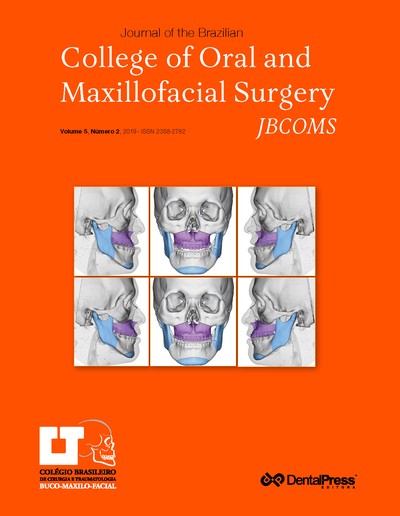
Arteriovenous fistula after orthognathic surgery: a case report
Danilo Passeado Branco Ribeiro, Eduardo Wajnberg, Marcelo Galindo Silvares, Thaís Pimentel De Sá Bahia, Hugo Leonardo Mendes Barros, Paulo Jose D’albuquerque Medeiros
Traumatic arteriovenous fistulae (TAFs) are an abnormal communication between an artery and its accompanying vein, caused by incomplete laceration of both vessels. TAFs have only rarely been reported after orthognathic surgery. This case report describes a patient who developed an TAF involving the sphenopalatine artery after orthognathic surgery. A 38-year-old woman, with Class III dentofacial deformity and facial asymmetry, underwent a surgical procedure consisting in a Le Fort I osteotomy for maxillary advancement and a bilateral sagittal split ramus osteotomy to correct the asymmetry. There was no persistent bleeding during surgery, with no need to control it by vascular clips or artery ligation. On the 18th postoperative day, the patient was admitted to the emergency hospital department with a brisk anterior and posterior epistaxis. Bilateral anterior and posterior nasal packing was performed to control the severe hemorrhage, without success. Supraselective embolization of bilateral sphenopalatine branches of the bilateral internal maxillary arteries was successful done to control bleeding. Treatment of TAF of the external carotid system includes surgical excision, external carotid ligation, and transarterial embolization that can be performed easily in surgically inaccessible lesions with very low risk and minimal morbidity.
Keywords: Orthognathic surgery. Arteriovenous fistula. Epistaxis.
How to cite: Ribeiro DPB, Wajnberg E, Silvares MG, Bahia TPS, Barros HLM, Medeiros PJD. Fístula arteriovenosa após cirurgia ortognática: relato de caso. J Braz Coll Oral Maxillofac Surg. 2015 set-dez;1(3):70-3. DOI: http://dx.doi.org/10.14436/2358-2782.1.3.070-073.oar
Monday, April 29, 2024 13:01










